The population density of a city can have a huge impact on what life is like in that city. Whether there are towering skyscrapers or intricate networks of narrow streets, cities with tightly packed populations offer a unique window into how people can coexist in limited spaces.
In this post, we’ll look at the most densely populated cities in the world in 2022, starting with the table below. Incredibly, out of the top 15 most densely populated cities, only five different countries are represented. Data from the table below comes from Statista.
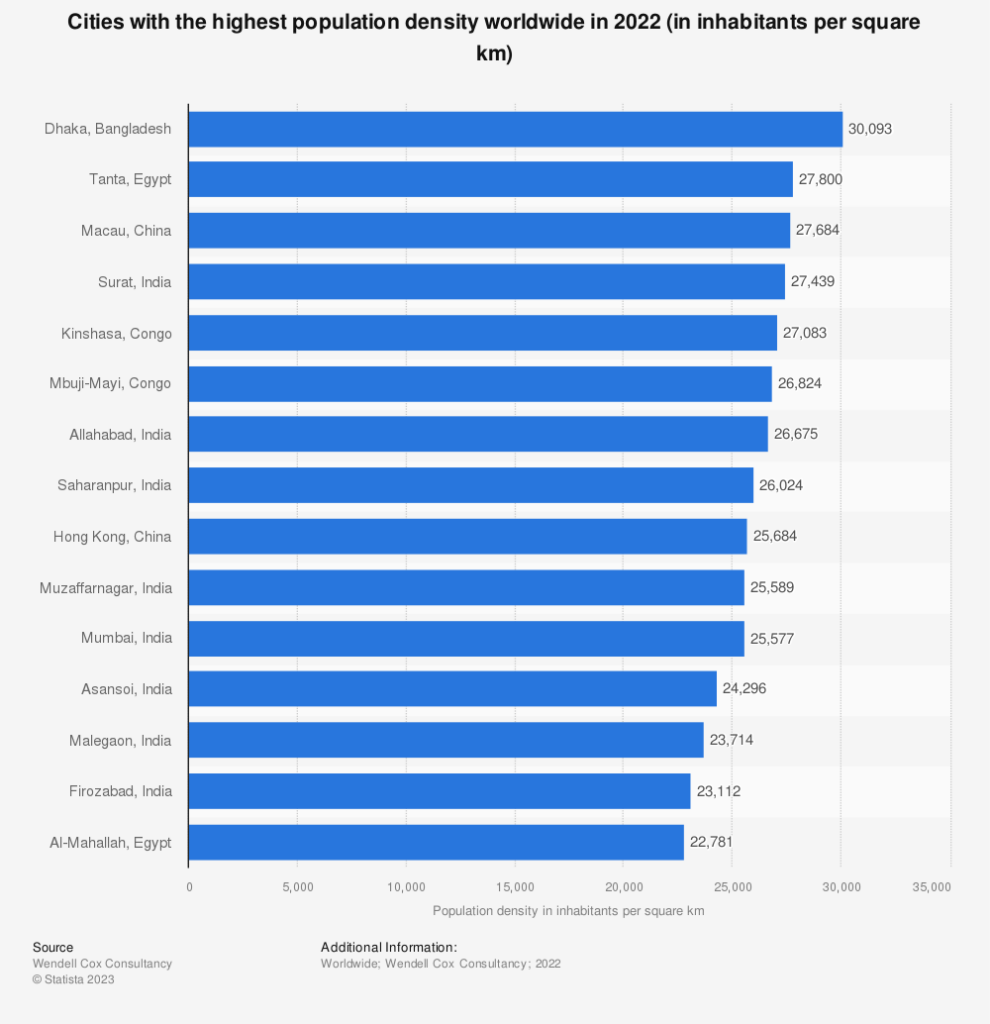
15. El Mahalla, Egypt
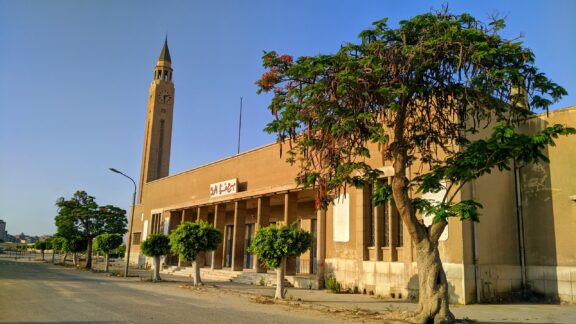
People per km2: 22,781
El Mahalla is the first of two cities to make this list of the most densely populated cities in the world. It’s located in the Nile Delta and has an impressive population density of 22,781 people per square kilometer. While it may not hold the same international renown as the nearby Egyptian capital of Cairo or Alexandria, El Mahalla has its own history dating back to ancient times as well as beautiful architecture in its many markets and mosques.
One of the more famous landmarks in the city is the clock tower of the Misr Spinning and Weaving Company. Misr is the largest cotton manufacturing company in Egypt, and its clock tower is a staggering 90 meters tall.
Part of El Mahalla’s legacy in recent history is its role in the 2011 Egyptian Revolution. Thousands of industrial workers in the city started protests that echoed throughout the country.
14. Firozabad, India
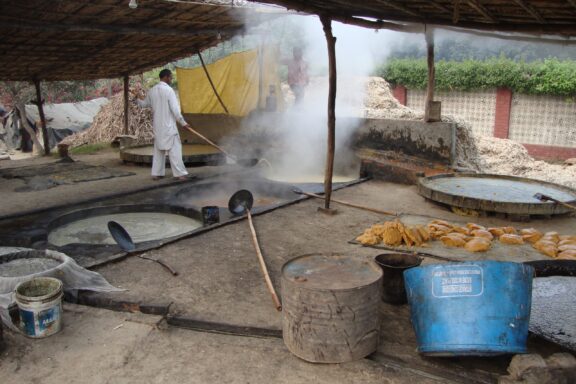
People per km2: 23,112
Coming in at number 14 on our list of most densely populated cities is Firozabad, located in India’s state of Uttar Pradesh. This is the first of many Indian cities on this list, which perhaps shouldn’t be a surprise considering India’s position as one of the most populous countries in the world.
As a center for India’s glassmaking industry, Firozabad has earned the names “City of Glass” and “City of Bangles.” The tradition of glassmaking in the city dates back to the 16th century and has been well preserved, becoming an attraction for tourists and supporting the souvenir market in India.
The city was named after Firoz Shah, whose tomb is near the city, in 1566 by Emperor Akbar. The city is in the cultural region of Braj, which has witnessed the rules of many different dynasties.
13. Malegaon, India
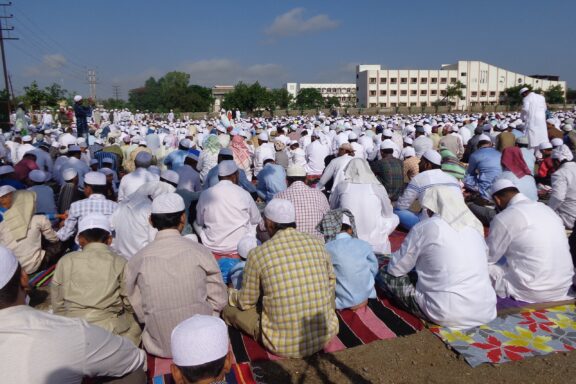
People per km2: 23,714
Another densely populated Indian city is Malegaon, located in the state of Maharashtra at the confluence of the Mausam and Girna rivers. Now the second-largest city in the Nashik district, Malegaon was once a small junction named Maliwadi, meaning hamlet of gardeners. The construction of Fort Malegaon in the area attracted thousands of artisans and workers looking for employment and led to the city’s initial growth.
Malegaon is known for its textile industry, which flourished after the introduction of power looms to the city. It is still a hub of textile production, attracting workers from all over the country to the many small and medium-sized enterprises engaging in the weaving of cloth.
Malegaon’s entrepreneurial spirit is also reflected in its burgeoning local film industry, often referred to as “Mollywood,” which produces low-budget films and is carving out a niche on YouTube.
12. Asansol, India
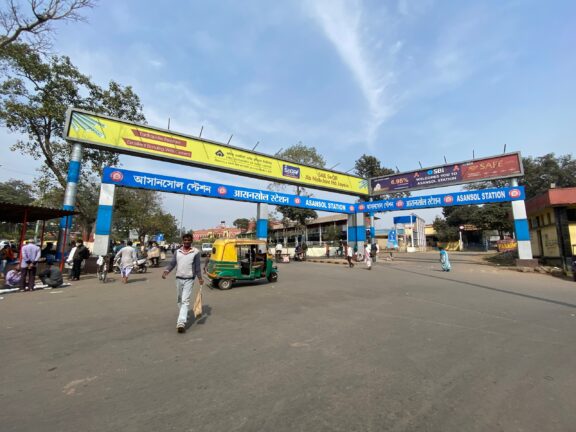
People per km2: 24,296
India’s Asansol, the second-largest city in West Bengal after Kolkata, is an industrial city that is known primarily for its coal mines and steel production. Asansol is part of an industrial belt that includes Durgapur and is a significant contributor to India’s economic engine. Unfortunately, the coal mines have also contributed to economic struggles for residents in the area.
This city’s origin story is intimately tied to the development of the railways and the discovery of rich coal beds in the region. The growth of the IISCO Steel Plant has also played a pivotal role in shaping the economic landscape of Asansol.
The education sector of Asansol is also burgeoning, with numerous colleges and schools, such as the public Kazi Nazrul University and the private Asansol Engineering College, that cater to a growing student population.
11. Mumbai, India
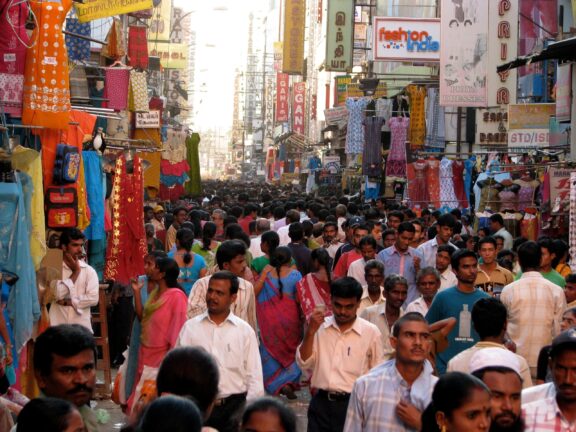
People per km2: 25,577
Mumbai, the capital city of the Indian state of Maharashtra, is a pulsating metropolis that stands as India’s financial, commercial, and entertainment capital. Known as Bombay until 1995, Mumbai is a blend of colonial history, ancient traditions, and modern culture.
As the most populous city in India and the fourth-most populous in the world, Mumbai’s landscape is an incredible mix of high-rise buildings, bustline slums, colonial architecture, and sprawling suburbs. Some of its iconic landmarks include the Gateway of India and the Chhatrapati Shivaji Terminus railway station.
Mumbai is also home to Bollywood, India’s most famous and prolific film industry, as well as one of the biggest universities in the world. These aspects of the city, in addition to job opportunities, help to draw people to the city from around the country and abroad.
10. Muzaffarnagar, India
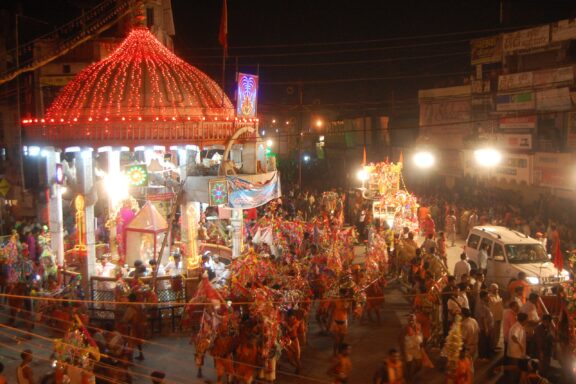
People per km2: 25,589
Muzaffarnagar, situated in the northern part of Uttar Pradesh, India, is a city with a history that dates to the Mughal era, being established in 1633 by the Mughal official Sayyid Muzaffar Khan.
The city is part of the fertile agricultural region known as the Doab, between the Ganges and Yamuna rivers, which makes it one of the leading producers of sugarcane in the country, earning it the nickname of “The Sugar Bowl of India.”
Apart from its agricultural significance, Muzaffarnagar has a rich cultural heritage with various religious sites that attract devotees from different parts of the country. The city also reflects a blend of various cultures and traditions, owing to its history of being influenced by various rulers and settlers.
9. Hong Kong, China
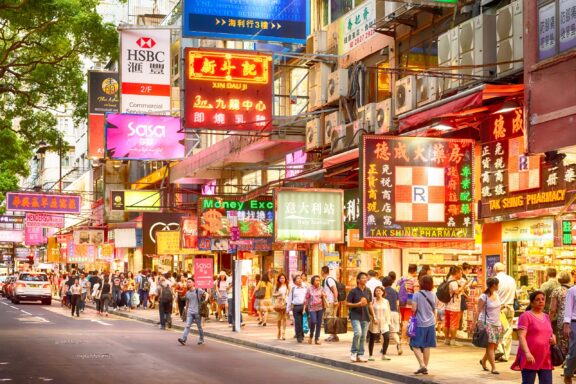
People per km2: 25,684
Hong Kong, officially known as the Hong Kong Special Administrative Region of the People’s Republic of China, is a vibrant metropolis with an impressive skyline, bustling harbor, and dense population. It is likely best known as a global financial center characterized by a free-market economy and low taxation.
The population density is so high in Hong Kong that it is even becoming difficult for residents to find spaces for the urns of their deceased loved ones. Amidst the high concentration of people in Hong Kong are attractions like the Temple Street Night Market and many shopping options.
Hong Kong’s history is a story of cultural interchange, colonial influences, and a long-standing tradition as a trading post. It was a British colony from 1842 until its sovereignty was transferred to China in 1997. Today, it operates under the principle of “one country, two systems,” maintaining its own legal and economic systems separate from mainland China.
8. Saharanpur, India
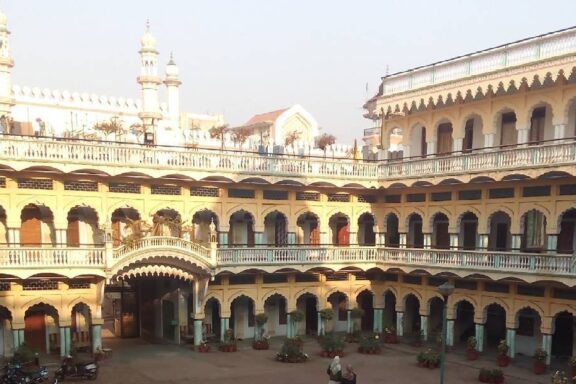
People per km2: 26,024
Another Indian locale in the state of Uttar Pradesh that ranks among the most densely populated cities in the world is Saharanpur. It is located at the northernmost tip of Uttar Pradesh and was founded in 1340, named after Shah Harun Chishti.
Saharanpur has been an important center for the wood carving industry, with skilled artisans known for their intricate designs on furniture and handicrafts that are revered both nationally and internationally. The city’s extensive history is reflected in its diverse architecture, with several mosques and shrines that date back to the Mughal era.
One of the city’s most celebrated botanical wonders is the Company Garden, now known as the Saharanpur Botanical Gardens, which was laid out during the British era and still houses a variety of flora and rare plant species.
7. Allahabad, India
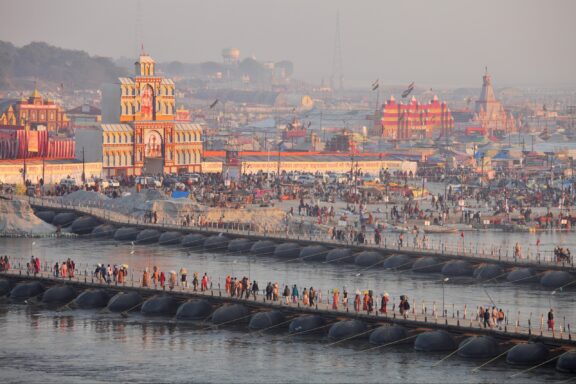
People per km2: 26,675
The city of Allahabad, also known as Prayagraj, is the administrative headquarters of the Prayagraj district, which is the most populous district in the state of Uttar Pradesh. The city is also one of the most densely populated urban centers in the world.
Allahabad is one of the oldest cities in Northern India, founded by the Mughal Emperor Akbar in 1583. Its location at the confluence of the Ganges and Yamuna rivers is known as the Triveni Sangam, a place of great religious significance to Hindus.
In addition to its already massive population, Allahabad hosts the Kumbh Mela approximately every 12 years. This is the largest peaceful congregation of pilgrims on earth.
6. Mbuji-Mayi, Congo
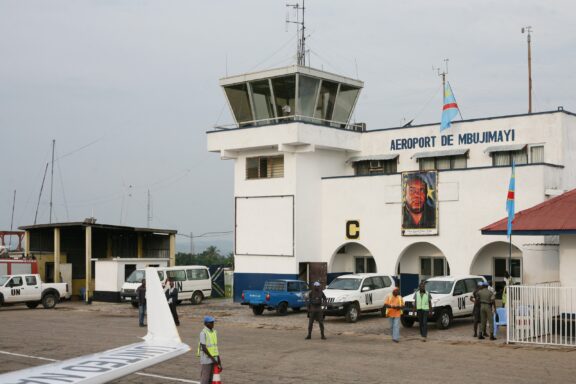
People per km2: 26,824
Mbuji-Mayi, previously known as Bakwanga, is the capital of the Kasai-Oriental Province in the south-central Democratic Republic of Congo. It is the second-largest city in the country, with a population estimate of 2.9 million according to the 2023 CIA World Factbook.
The city’s name translates to “Goat-Water” in Tshiluba, the local language, reflecting the abundance of goats in the region.
The region was originally a cluster of villages owned by the Bakwanga clan, with significant diamond deposits discovered in 1907. Following the discovery, the Societé minière de Bakwanga (MIBA) established a mining camp, which grew into today’s city. Mining activity has slowed in recent decades, causing food insecurity and poor quality of life.
Despite its remote location with little connectivity to surrounding provinces or major cities like Kinshasa and Lubumbashi, Mbuji-Mayi has remained the traditional heart of industrial diamond mining in Congo, sitting atop one of the largest diamond deposits in the world.
5. Kinshasa, Democratic Republic of the Congo
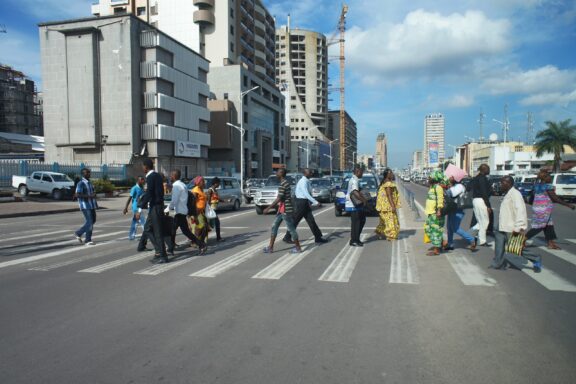
People per km2: 27,083
Kinshasa, known as Léopoldville until 1966, is the capital of the Democratic Republic of the Congo and the country’s largest city. It has evolved from a site of fishing and trading villages along the Congo River to one of the world’s fastest-growing megacities, now the most densely populated city in the DRC and one of the most populous in Africa.
Covering 9,965 square kilometers (3,848 square miles), Kinshasa stretches along the Pool Malebo on the Congo River and is one part of the world’s closest pair of capital cities, lying across from Brazzaville, the capital of the Republic of the Congo.
As one of the 26 provinces of the DRC, Kinshasa is divided into 24 communes and is the largest Francophone urban area in the world, with French and Lingala as the main languages.
4. Surat, India
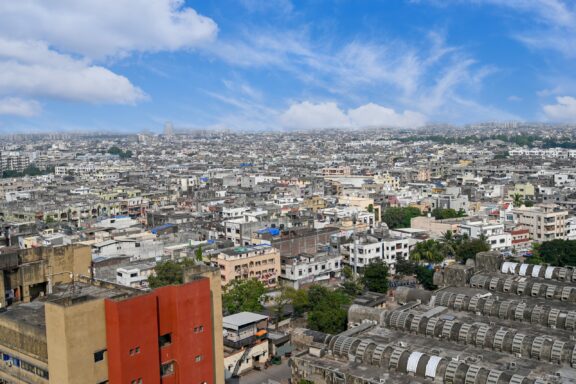
People per km2: 27,439
Surat, known as the Diamond City of India, is a prominent city in the western Indian state of Gujarat, situated on the banks of the Tapti River near its confluence with the Arabian Sea. Historically, it was a significant seaport and is now a major commercial and economic center in South Gujarat.
Surat has a globally significant diamond and textile industry, with about 90% of the world’s diamonds being cut and polished here.
The city is expected to be the world’s fastest-growing city from 2019 to 2035, with a notable GDP growth rate. It has been awarded the title of the “best city” and is recognized for its smart city initiatives, including partnerships with major IT firms and accolades for resilience from UNESCO.
3. Macau, China
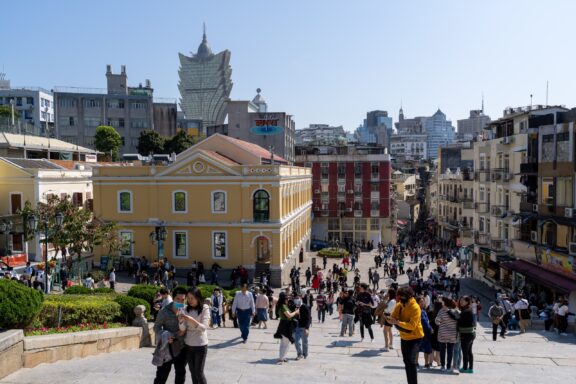
People per km2: 27,684
Macau, often referred to as the “Las Vegas of Asia,” is a vibrant city and a special administrative region of China located in the western Pearl River Delta by the South China Sea. It is the third-most densely populated city in the world.
Originally leased to Portugal as a trading post in 1557, Macau was under Portuguese administration until 1999, when it was transferred to China. Despite the handover, Macau maintains separate governing and economic systems from mainland China under the “one country, two systems” principle. This blend of cultures is evident in its historic center, which was inscribed on the UNESCO World Heritage List in 2005.
Today, Macau’s economy is significantly bolstered by its gambling tourism, an industry that isn’t legal in the rest of China.
2. Tanta, Egypt
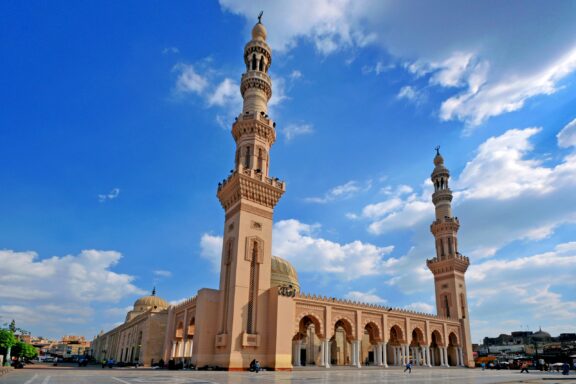
People per km2: 27,800
Tanta, located between Cairo and Alexandria, is the fifth-largest city in Egypt and the most densely populated. Known historically for its cotton-ginning industry, Tanta has grown into a bustling urban center.
The city is also the site of the Moulid of Sayid Ahmed el-Badawi, a vibrant eight-day religious festival celebrating a revered Sufi figure from the 13th century. This festival attracts millions of visitors annually.
Tanta is renowned for its sweet candy, a delicacy since the 1800s, and hosts many cotton processing factories and textile industries. It’s also known for Tanta University, established in 1972. The Tanta Museum houses artifacts from ancient sites like Sais, Naucratis, and Buto, showcasing the region’s rich historical legacy.
1. Dhaka, Bangladesh
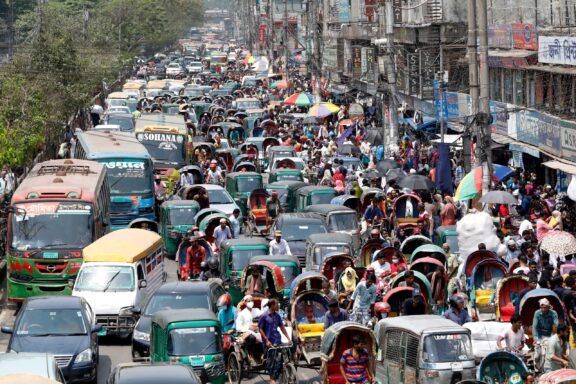
People per km2: 30,093
Dhaka, the vibrant capital of Bangladesh, tops the list of most densely populated cities in the world. It is the economic, cultural, and scientific heart of Eastern South Asia and holds the title of the largest Bengali-speaking city in the world.
The city’s history stretches back to the first millennium, flourishing as a provincial capital of the Mughal Empire in the 17th century. During Mughal rule, the city was renowned for its muslin trade and was a prosperous city decorated with exquisite Mughal architecture.
Today, Dhaka is a beta-global city, central to Bangladesh’s political, economic, and cultural life. The city contributes significantly to the nation’s economy and hosts over 50 diplomatic missions including foreign embassies and high commissions.
Image Sources and Copyright Information
- Sunny Day at El Mahalla El Kubra Train Station in Egypt: © Mekky22/Shutterstock
- Traditional Indian Sweet Making at an Outdoor Kitchen in Firozabad, Uttar Pradesh: © Anuja Mukhopadhyay/Shutterstock
- Gathering of People for a Religious Event in Malegaon, India: © Mayur_Mehta/Shutterstock
- Busy Day at Asansol Railway Station Entrance in Kolkata, India: © Ritesh Ranjan Sett/Shutterstock
- Bustling Street Market Crowd in Mumbai, India: © Subhrajit123/Shutterstock
- Festive Procession at Shiv Chowk in Muzaffarnagar, India at Night: © Arpitsinghal65/Wikimedia Commons | CC BY-SA 4.0 International
- Bustling Street Scene at Dusk with Neon Signage in Hong Kong: © TungCheung/Shutterstock
- Courtyard View of a Traditional Indo-Islamic Architectural Building: © TheAafi/Wikimedia Commons | CC BY 4.0 International
- Thousands of Pilgrims Crossing Pontoon Bridges at the Kumbh Mela Festival in Allahabad, India: © Vladimir Melnik/Shutterstock
- A Busy Day at Mbuji-Mayi Airport with UN Vehicles and Personnel: © MONUSCO/Myriam Asmani/Wikimedia Commons | CC BY-SA 2.0 Generic
- Pedestrians Crossing a Busy Street in Kinshasa, Democratic Republic of Congo: © Alexandra Tyukavina/Shutterstock
- Aerial View of Dense Urban Landscape in Surat, Gujarat, India: © azadjain1/Shutterstock
- Busy Day at a Historic Square in Macau with Modern Skyscrapers in the Background: © kylauf/Shutterstock
- Majestic Mosque El-Badawi in Tanta, Egypt under a Clear Blue Sky: © Ahmed Elfiky/Shutterstock
- Bustling Street Scene with Dense Traffic and Pedestrians in Dhaka, Bangladesh: © Sk Hasan Ali/Shutterstock